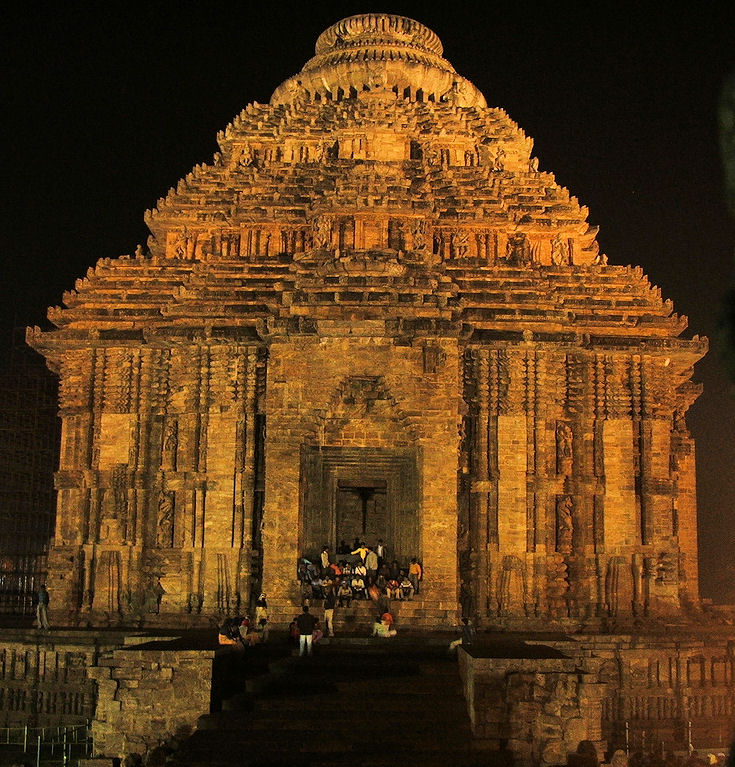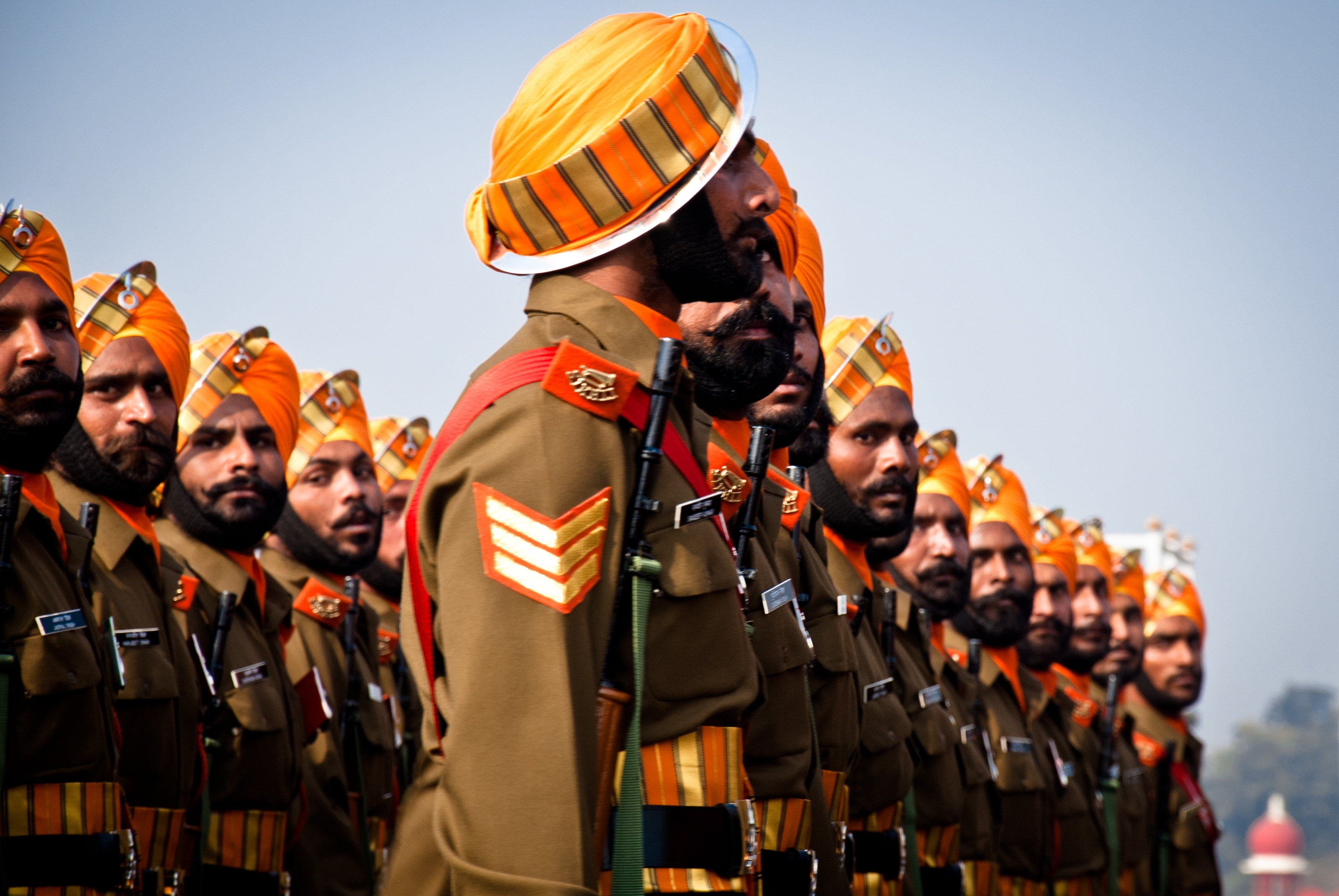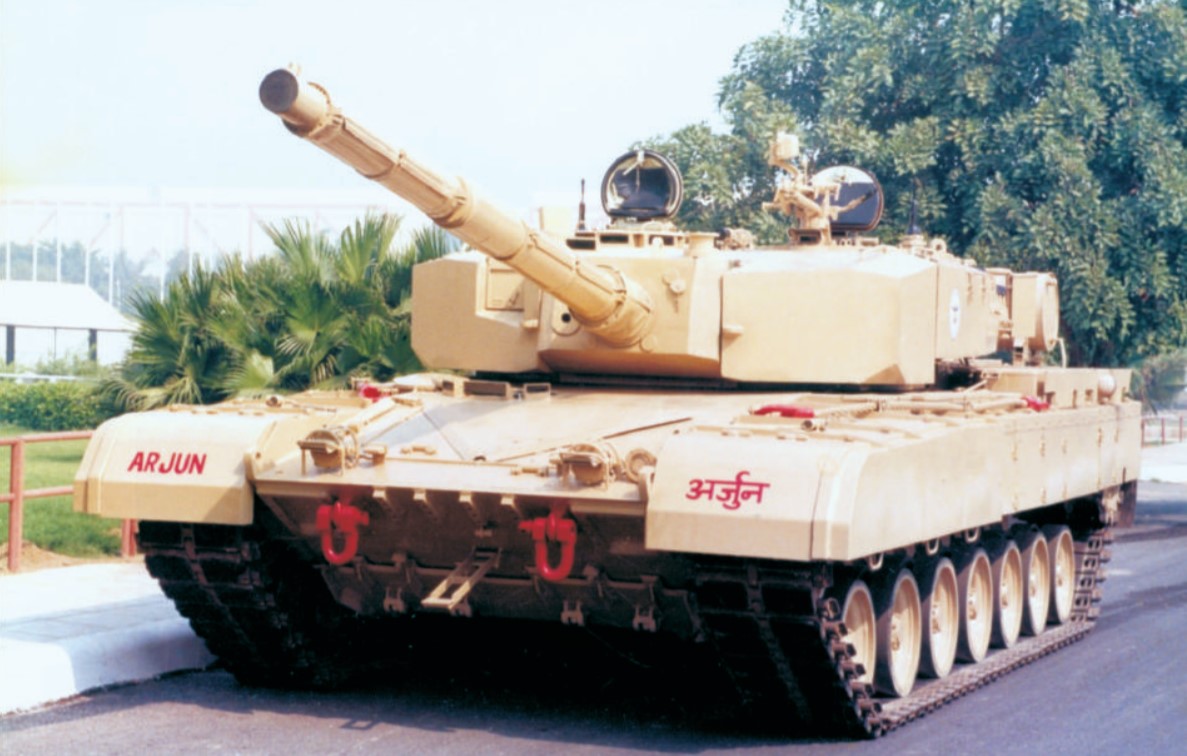|
XII Corps (India)
XII Corps is a corps of the Indian Army and one of the two corps in the Pune-based Southern Command (India), Southern Command. Formation With two combat divisions on the order of battle of Southern Command and increasing operational importance of the desert sector, by January 1987, a Corps Headquarters was sanctioned. HQ 12 Corps was raised at Jodhpur during the volatile days of Operation Brasstacks, Operation Trident. The corps, which came into existence on the auspicious day of Maha Shivaratri on February 26, 1987 is charged with protection of the desert sectors of the country falling in Rajasthan and Gujarat states and was raised under Lieutenant General A K Chatterjee as the first General Officer Commanding (GOC). Also referred to as Desert Corps within the army, the corps adopted ''Konark'' as its formation insignia after the Konark Sun Temple of Puri as a symbolic representation of the radiation of the sun in eight cardinal directions, thereby establishing a spiritual link w ... [...More Info...] [...Related Items...] OR: [Wikipedia] [Google] [Baidu] |
Konark Corps Formation Sign (cropped)
Konark is a medium town in the Puri district in the state of Odisha, India. It lies on the coast by the Bay of Bengal, 65 kilometres from the capital of the state, Bhubaneswar. It is the site of the 13th-century Konark Sun Temple, Sun Temple, also known as the ''Black Pagoda'', built in black granite during the reign of Narasimhadeva I, Narasinghadeva-I. The temple is a World Heritage Site. The temple is now mostly in ruins, and a collection of its sculptures is housed in the Sun Temple Museum, which is run by the Archaeological Survey of India. Konark is also home to an annual dance festival called Konark Dance Festival, devoted to classical Indian dance forms, including the traditional classical dance of Odisha, Odissi. In February 2019, the Konark Dance Festival (now called Konark Music and Dance Festival) will be hosting its 33rd edition. The state government is also organising annual Konark Festival and International Sand Art Festival at Chandrabhaga Beach of Konark. On 16 ... [...More Info...] [...Related Items...] OR: [Wikipedia] [Google] [Baidu] |
Konark Corps
Konark is a medium town in the Puri district in the state of Odisha, India India, officially the Republic of India (Hindi: ), is a country in South Asia. It is the seventh-largest country by area, the second-most populous country, and the most populous democracy in the world. Bounded by the Indian Ocean on the so .... It lies on the coast by the Bay of Bengal, 65 kilometres from the capital of the state, Bhubaneswar. It is the site of the 13th-century Konark Sun Temple, Sun Temple, also known as the ''Black Pagoda'', built in black granite during the reign of Narasimhadeva I, Narasinghadeva-I. The temple is a World Heritage Site. The temple is now mostly in ruins, and a collection of its sculptures is housed in the Sun Temple Museum, which is run by the Archaeological Survey of India. Konark is also home to an annual dance festival called Konark Dance Festival, devoted to classical Indian dance forms, including the traditional classical dance of Odisha, Odissi. In Febr ... [...More Info...] [...Related Items...] OR: [Wikipedia] [Google] [Baidu] |
The Grenadiers
The Grenadiers is an infantry regiment of the Indian Army, formerly part of the Bombay Army and later the pre-independence British Indian Army, when the regiment was known as the 4th Bombay Grenadiers. It has distinguished itself during the two world wars and also since the Independence of India. The regiment has won many battle honours and gallantry awards, and is considered to be one of India's most decorated regiments with three Param Vir Chakra awardees in three different conflicts. History Early history The oldest grenadier regiment of the armies in the Commonwealth belongs to the Indian Army. The concept of 'Grenadiers' evolved from the practice of selecting the bravest and strongest men for the most dangerous tasks in combat. The Grenadiers have the longest unbroken record of existence in the Indian Army.Sharma, p. 75 The history of the Indian Grenadiers is linked to the troops recruited for the army of the Bombay Presidency. The very first mention of a grenadier compan ... [...More Info...] [...Related Items...] OR: [Wikipedia] [Google] [Baidu] |
Jat Regiment
The Jat Regiment is an infantry regiment of the Indian Army, of which it is one of the longest-serving regiments.Army's Jat Regiment Best Marching Contingent in Republic Day 2007 Parade , India Defence http://www.dsalert.org/gallantry-awards/shaurya-chakra The regiment has won 19 s between 1839 and 1947, and post-independence it has won five battle honours, including 2 , 8 |
Sikh Light Infantry
The Sikh Light Infantry is a light infantry regiment of the Indian Army.Anniversary Celebrations of Sikh LI The regiment is the successor unit to the 23rd, 32nd and 34th Royal Sikh Pioneers of the . The regiment recruits from the Sikh community of |
Lieutenant General
Lieutenant general (Lt Gen, LTG and similar) is a three-star military rank (NATO code OF-8) used in many countries. The rank traces its origins to the Middle Ages, where the title of lieutenant general was held by the second-in-command on the battlefield, who was normally subordinate to a captain general. In modern armies, lieutenant general normally ranks immediately below general and above major general; it is equivalent to the navy rank of vice admiral, and in air forces with a separate rank structure, it is equivalent to air marshal. A lieutenant general commands an army corps, made up of typically three army divisions, and consisting of around 60 000 to 70 000 soldiers (U.S.). The seeming incongruity that a lieutenant general outranks a major general (whereas a major outranks a lieutenant) is due to the derivation of major general from sergeant major general, which was a rank subordinate to lieutenant general (as a lieutenant outranks a sergeant major). In contrast, ... [...More Info...] [...Related Items...] OR: [Wikipedia] [Google] [Baidu] |
Kerala
Kerala ( ; ) is a state on the Malabar Coast of India. It was formed on 1 November 1956, following the passage of the States Reorganisation Act, by combining Malayalam-speaking regions of the erstwhile regions of Cochin, Malabar, South Canara, and Thiruvithamkoor. Spread over , Kerala is the 21st largest Indian state by area. It is bordered by Karnataka to the north and northeast, Tamil Nadu to the east and south, and the Lakshadweep Sea to the west. With 33 million inhabitants as per the 2011 census, Kerala is the 13th-largest Indian state by population. It is divided into 14 districts with the capital being Thiruvananthapuram. Malayalam is the most widely spoken language and is also the official language of the state. The Chera dynasty was the first prominent kingdom based in Kerala. The Ay kingdom in the deep south and the Ezhimala kingdom in the north formed the other kingdoms in the early years of the Common Era (CE). The region had been a prominent spic ... [...More Info...] [...Related Items...] OR: [Wikipedia] [Google] [Baidu] |
2001 Gujarat Earthquake
The 2001 Gujarat earthquake, also known as the Bhuj earthquake, occurred on 26 January, India's 52nd Republic Day, at . The epicentre was about 9 km south-southwest of the village of Chobari in Bhachau Taluka of Kutch District of Gujarat, India. The intraplate earthquake measured 7.7 on the moment magnitude scale and had a maximum felt intensity of X (''Extreme'') on the Mercalli intensity scale. The earthquake killed between 13,805 and 20,023 people (including 18 in southeastern Pakistan), injured another 167,000 and destroyed nearly 340,000 buildings. Tectonic setting Gujarat lies 300–400 km from the plate boundary between the Indian Plate and the Eurasian Plate, but the current tectonics are still governed by the effects of the continuing continental collision along this boundary. During the break-up of Gondwana in the Jurassic, this area was affected by rifting with a roughly west–east trend. During the collision with Eurasia the area has undergone shorteni ... [...More Info...] [...Related Items...] OR: [Wikipedia] [Google] [Baidu] |
Bhuj
Bhuj () is a Municipality and District Headquarters of Kutch District in the state of Gujarat, India. Etymology According to legend, Kutch was ruled by the Nāga chieftains in the past. Sagai, a queen of Sheshapattana, who was married to King Bheria Kumar, rose up against Bhujanga, the last chieftain of Naga. After the battle, Bheria was defeated and Queen Sagai committed sati. The hill where they lived later came to be known as Bhujia Hill and the town at the foothill as Bhuj. Bhujang was later worshiped by the people as snake god, '' Bhujanga'', and a temple was constructed to revere him. History Bhuj was founded by Rao Hamir in 1510 and was made the capital of Kutch by Rao Khengarji I in 1549. Its foundation stone as state capital was formally laid on Vikram Samvat 1604 Maagha 5th (approx. 25 January 1548). From 1590 onwards, when Rao was forced to acknowledge the Mughal supremacy, Bhuj came to be known as Suleiman Nagar amongst Muslims. The city's walls were built by ... [...More Info...] [...Related Items...] OR: [Wikipedia] [Google] [Baidu] |
Arjun Tank
The Arjun () is a third generation main battle tank developed by the Combat Vehicles Research and Development Establishment (CVRDE) of the Defence Research and Development Organisation (DRDO), for the Indian Army. The tank is named after Arjuna, the archer prince who is the main protagonist of the Indian epic poem ''Mahabharata''. Design work began in 1986 and was finished in 1996. The Arjun main battle tank entered service with the Indian Army in 2004. The 43rd Armoured Regiment, formed in 2009, was the first regiment to receive the Arjun. The Arjun features a 120 mm rifled main gun with indigenously developed armour-piercing fin-stabilized discarding-sabot ammunition, one PKT 7.62 mm coaxial machine gun and a NSVT 12.7 mm machine gun. Powered by a single MTU multi-fuel diesel engine rated at 1,400 hp, it can achieve a maximum speed of and a cross-country speed of . It has a four-man crew: commander, gunner, loader and driver. In 2010 and 2013, the ... [...More Info...] [...Related Items...] OR: [Wikipedia] [Google] [Baidu] |
140 Armoured Brigade
Fourteen or 14 may refer to: * 14 (number), the natural number following 13 and preceding 15 * one of the years 14 BC, AD 14, 1914, 2014 Music * 14th (band), a British electronic music duo * ''14'' (David Garrett album), 2013 *''14'', an unreleased album by Charli XCX * "14" (song), 2007, from ''Courage'' by Paula Cole Other uses * ''Fourteen'' (film), a 2019 American film directed by Dan Sallitt * ''Fourteen'' (play), a 1919 play by Alice Gerstenberg * ''Fourteen'' (manga), a 1990 manga series by Kazuo Umezu * ''14'' (novel), a 2013 science fiction novel by Peter Clines * ''The 14'', a 1973 British drama film directed by David Hemmings * Fourteen, West Virginia, United States, an unincorporated community * Lot Fourteen, redevelopment site in Adelaide, South Australia, previously occupied by the Royal Adelaide Hospital * "The Fourteen", a nickname for NASA Astronaut Group 3 * Fourteen Words, a phrase used by white supremacists and Nazis See also * 1/4 (other) * F ... [...More Info...] [...Related Items...] OR: [Wikipedia] [Google] [Baidu] |
Jaisalmer
Jaisalmer , nicknamed "The Golden city", is a city in the Indian state of Rajasthan, located west of the state capital Jaipur. The town stands on a ridge of yellowish sandstone and is crowned by the ancient Jaisalmer Fort. This fort contains a royal palace and several ornate Jain temples. Many of the houses and temples of both the fort and of the town below are built of finely sculptured sandstone. The town lies in the heart of the Thar Desert (the Great Indian Desert) and has a population, including the residents of the fort, of about 78,000. It is the administrative headquarters of Jaisalmer District. Jaisalmer was once the capital of Jaisalmer State. Origin of name Jaisalmer was founded by Rawal Jaisal in 1156 AD. ''Jaisalmer'' means ''the Hill Fort of Jaisal''. Jaisalmer is sometimes called the "Golden City of India" because the yellow sandstone used throughout the architecture of both the fort and the town below, imbues both with a certain golden-yellow light. Geography ... [...More Info...] [...Related Items...] OR: [Wikipedia] [Google] [Baidu] |
.jpg)




